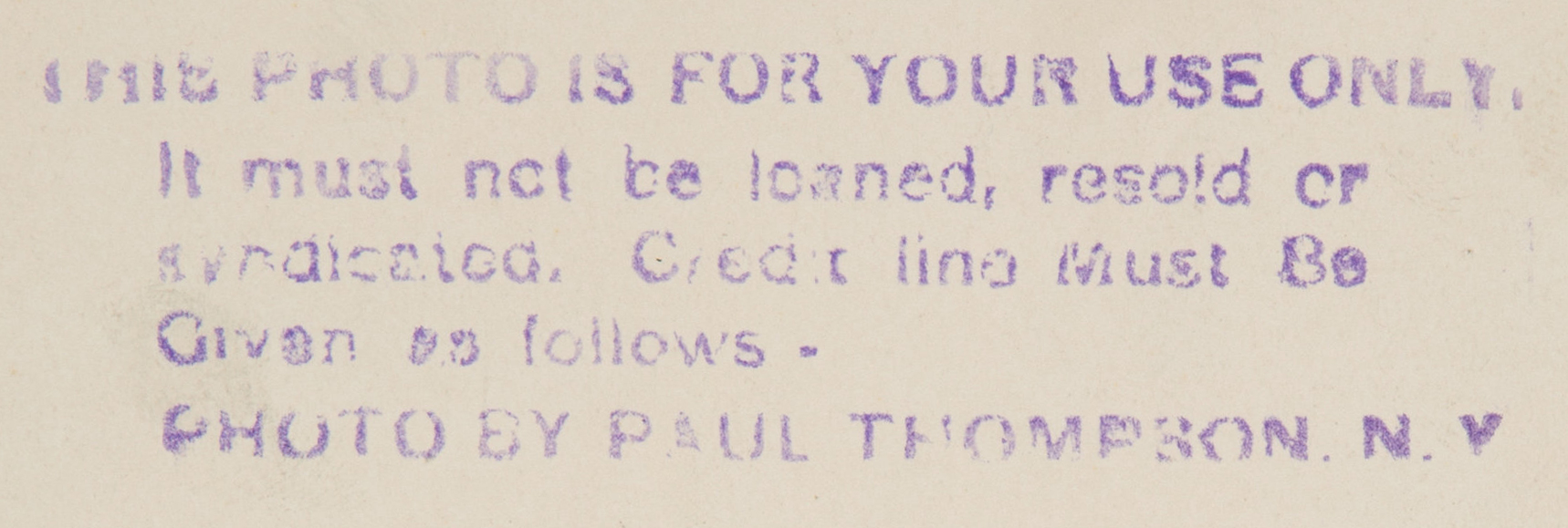

Ultimately, Haver was convicted of a misdemeanour and, in October of 1885, a judge imposed a fine of $500 he was spared a prison sentence in light of his agreement that he would retire from publishing the paper. Callinan, had been indicted on blackmail charges. The Times published a number of follow-ups in 1884, detailing further allegations of malfeasance, and on August 17 1884, reported that Haver and another manager of Thompson's Reporter, J.E. A Times reporter found Haver at the offices of the Reporter, where he vehemently denied the charges of blackmail, and accused the complaining banks of attempting to evade paying their bills. Haver" (in later articles, named variously as either "Lewis" or "Louis" P. The paper's current owner was unknown, but reputed to be one "L. According to the Times, while Thompson's Reporter had, under John Thompson, been "the pioneer in class of journalism" and "a standard guide to the business", Thompson had sold off the paper some 20 years earlier, and it had subsequently changed hands multiple times.

In July of 1884, the New York Times published an exposé uncovering a large-scale blackmail scheme in which the publishers of Thompson's Reporter had, for years, been sending letters to banks around the country requesting payment for subscriptions or advertisements in the reporter, threatening to give them a negative rating if they did not comply. Thompson's reporter seems to have ceased publication around 1884 or 1885, though accounts of this time are conflicting. Thompson's Bank Reporter had its offices in the old New York World building on Park Row when the building burned down in 1882. Mendelson as the National Bank Note Reporter (and later as The National Bank Note Reporter and Financial Gazette) was merged with Thompson's. In 1876, a bank note reporter published from 1864 by L.
#New player note c. thompson free
īy 1866, as the free banking era came to a close, the traditional function of bank reporters became obsolete, and Thompson's character shifted toward that of a "bank directory". By 1858, it was circulating under the title Thompson's Bank Note and Commercial Reporter. Īt some point before 1849, the reporter was renamed The Bank Note & Commercial Reporter. Initially announced as a weekly paper to be issued on Saturdays, by March 1842, it was being published twice-weekly, on Wednesdays and Saturdays.

At the time of its debut, there were two other noteworthy existing bank note reporters being published in the city, one of them by Archibald McIntyre. Ī notice in the New-York American on Decemannounced it as "a new Weekly Paper, under the title of Thompson's Bank Reporter, in pamphlet form, containing sixteen pages" to be issued beginning January 4, 1842. The first issue of the reporter was published in 1842. Its founder, John Thompson, had been working as a bill broker there since 1832, previously having worked dealing lottery tickets. Thompson's was published from Wall Street in New York City. The reporter sometimes included facsimiles of counterfeit plates which were considered especially dangerous. The caption explains that, in this case, the white oval is of constant thickness in the counterfeit, but is thicker toward the bottom in the genuine bill. Others were annotated as being likely to fail.Īn example of facsimiles included to help identify particular counterfeit plates. The name of the bank's president and cashier įurthermore, some banks would be marked as closed or fraudulent, indicating to the reader that their bills were worthless.Descriptions of any counterfeits of the bank's bills currently in circulation.For example, the figure " 1⁄ 2" would mean that a $1 note from that bank was trading for 99.5 cents worth of gold. The discount at which its notes traded, as a percentage.For each bank, the reporter would generally include: : 240 The remainder of the publication mostly consisted of an exhaustive listing of banks, organized by state. The front page of the reporter typically contained a small number of editorials and breaking financial news. : 239–240 One Wisconsin banker recalled that "the merchant in his store or the peddler on the prairies would as soon think of doing their business without scales, measure, or yardstick as without a Thompson's, or some other bank note reporter of recent date". The publication's audience included bankers and merchants ranging from New York City to the western states.

Thompson's offered the following subscription options: : 239


 0 kommentar(er)
0 kommentar(er)
